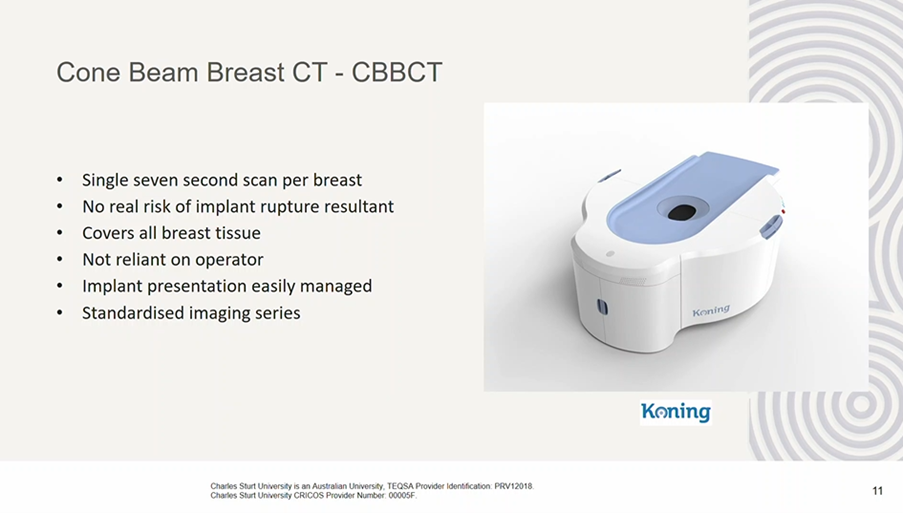9 May 2025
Cone Beam Breast Computed Tomography (CBBCT) has been called the most compassionate way to image for breast cancer, according to radiographer and Associate Professor Kelly Spuur. The modality's arrival in Australia is a major advancement in breast imaging.
During a CBBCT scan, the patient lies on a table and self-positions. The scan is just seven seconds per breast, with no need for breast compression, or for the radiographer to touch the patient. The scan covers all breast tissue, and delivers quality 3D images at a higher resolution than MRI. Unlike traditional mammography, CBBCT is particularly effective for women with dense breasts or implants.
Associate Professor Kelly Spuur says the modality will one day be available at BreastScreen and in private practice.

Marilyn Zelesco spoke to journalist Marie McInerney on her more than 30 years in sonography. Marilyn says creating ultrasound protocols for NASA astronauts is one of her career highlights.
Lead Sonographer at the Western Australia Department of Health, Marilyn Zelesco spoke about developing instructions so that astronauts could conduct ultrasound scans of each other and beam them back to Earth for analysis. This is particularly useful because astronauts are at risk of large blunt force injury and other injuries and illnesses when in space. At the time, NASA was concerned that if an astronaut had a head injury, they would have no way of knowing whether the injury was getting worse.
Marilyn is the 2025 recipient of the ASMIRT Board Award for her support of the Society and extensive contributions to the profession.
Croakey Health Media reported on CBBCT and Marilyn Zelesco's achievements in ''From outer space to the Antarctic and beyond – medical radiation sciences are having impact''.

